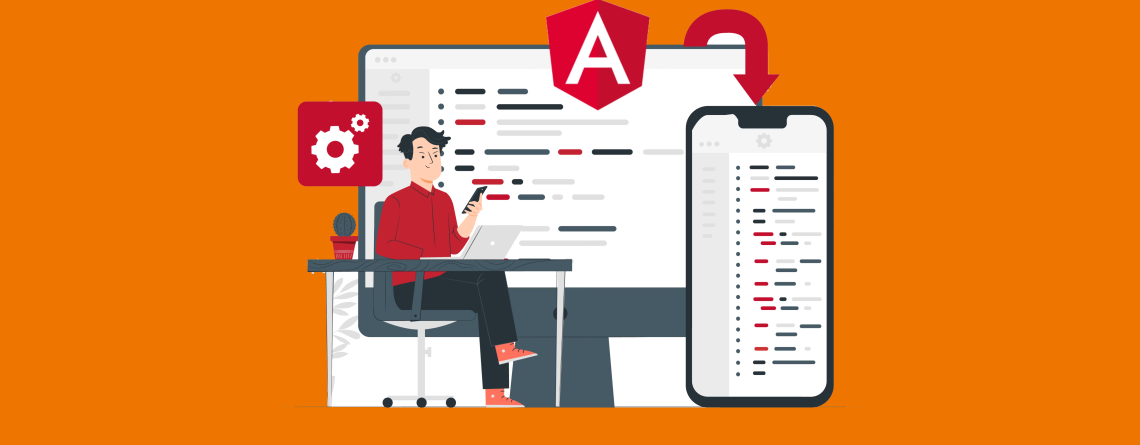Angular Observable Error Handling Best Practices
Handling errors effectively in Angular applications is crucial for delivering a smooth user experience. When working with Observables, which are a fundamental part of Angular’s reactive programming paradigm, proper error handling is essential. In this blog post, we’ll explore best practices for handling errors in Angular Observables with practical code examples.
Table of Contents
Introduction
Angular makes significant use of observables to manage asynchronous processes like HTTP requests and user interactions. Errors can happen throughout an Observable’s lifespan, including during HTTP requests and data transformations. Use these Observables error handling best practices to guarantee a dependable and user-friendly application.
Best Practices
1. Use the catchError Operator
An Observable stream’s failures may be detected and handled with the catchError operator. When utilizing Angular’s HttpClient to send HTTP queries, it is frequently utilized. Here’s an illustration of how to apply it:
import { catchError } from 'rxjs/operators';
this.httpClient.get('/api/data')
.pipe(
catchError((error: any) => {
// Handle the error here
console.error('An error occurred:', error);
// Optionally, re-throw the error or return a default value
return throwError('Something went wrong');
})
)
.subscribe(
(response) => {
// Handle the successful response
},
(error) => {
// This block will only execute if catchError is used
console.error('Error handler:', error);
}
);2. Centralize Error Handling
Consider centralizing error handling rather than treating problems individually in each Observable. Make a universal error-handling service that can be injected into other services and components. It is simpler to handle and track issues uniformly throughout your program with this method.
3. Provide Meaningful Error Messages
When handling errors, provide meaningful error messages to aid in debugging and user communication. Avoid exposing sensitive information and use descriptive error messages that guide developers and users in understanding the issue.
4. Logging Errors
Logging errors is essential for debugging and monitoring your application. Angular provides a logging mechanism, and you can use libraries like ngx-logger for more advanced logging features. Here’s a basic example using Angular’s built-in logging:
import { Injectable } from '@angular/core';
@Injectable({
providedIn: 'root'
})
export class LoggerService {
logError(message: string, error: any) {
console.error(message, error);
}
}Code Examples
Let’s illustrate these best practices with some code examples.
Example 1: Centralized Error Handling Service
import { Injectable } from '@angular/core';
import { throwError } from 'rxjs';
@Injectable({
providedIn: 'root'
})
export class ErrorHandlerService {
handle(error: any): void {
// Log the error, send it to a remote service, or perform other actions
console.error('An error occurred:', error);
// Optionally, re-throw the error or return a default value
throwError('Something went wrong');
}
}Example 2: Using Centralized Error Handling
import { Component } from '@angular/core';
import { HttpClient } from '@angular/common/http';
import { ErrorHandlerService } from './error-handler.service';
@Component({
selector: 'app-example',
template: `
<button (click)="getData()">Fetch Data</button>
`
})
export class ExampleComponent {
constructor(private http: HttpClient, private errorHandler: ErrorHandlerService) {}
getData() {
this.http.get('/api/data')
.subscribe(
(response) => {
// Handle the successful response
},
(error) => {
this.errorHandler.handle(error); // Centralized error handling
}
);
}
}Conclusion
Constructing robust and user-friendly applications demands the effective management of errors when dealing with Angular Observables. Enhancing the reliability of your Angular applications and simplifying the processes of debugging and maintenance can be achieved by adhering to established guidelines. These guidelines encompass the utilization of the catchError operator, the centralization of error-handling procedures, the provision of informative error messages, and the systematic logging of issues.
It’s important to recognize that there is no universal error-handling strategy, and the specific demands of your project may necessitate a tailored approach. Adapt these recommended practices to align with your application’s unique requirements, and remain committed to regularly evaluating and optimizing your error-handling methodology.
In this blog post, we have comprehensively addressed the fundamental best practices for managing errors within Angular Observables, offering practical code samples to illustrate these concepts. By implementing these guidelines, you can construct Angular applications that are more resilient and dependable.










Leave a Reply